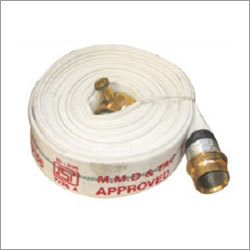Single Headed Hydrant Vlve

X
Single Headed Hydrant Vlve Price And Quantity
- 7500 INR
- 1 Piece
Single Headed Hydrant Vlve Product Specifications
- Fire
Single Headed Hydrant Vlve Trade Information
- Cheque Cash Advance (CA)
- All India
Product Description
A single-headed hydrant valve is a crucial component of a fire protection system, typically found in buildings, industrial facilities, and outdoor areas. It is designed to control the flow of water from a pressurized water supply to firefighting hoses or sprinkler systems. The single-headed design refers to a valve with a single outlet, allowing for a direct connection to firefighting equipment.
FAQs:
Q: What is the purpose of a single-headed hydrant valve?
A: The primary purpose of a single-headed hydrant valve is to provide a controlled water supply for firefighting operations. It allows firefighters to quickly connect hoses or sprinkler systems to a pressurized water source, enabling the effective extinguishment of fires or the suppression of fire hazards.
Q: How does a single-headed hydrant valve work?
A: A single-headed hydrant valve is typically installed on a fire protection pipeline and connected to a water supply. When needed, the valve is opened to allow water to flow through the valve and into the firefighting equipment connected to it. Closing the valve shuts off the water supply, stopping the flow.
Q: Where are single-headed hydrant valves commonly used?
A: Single-headed hydrant valves are commonly used in various settings, including commercial and residential buildings, industrial facilities, outdoor areas, and fire hydrant systems. They are strategically located for easy access during firefighting operations and are crucial for providing a reliable water supply.
Q: What are the key features of a single-headed hydrant valve?
A: Single-headed hydrant valves typically have a sturdy construction to withstand high water pressure and adverse conditions. They are designed for easy operation, often incorporating a large operating wheel or handle for quick opening and closing. Some valves may include additional features like a built-in pressure gauge or lockable handle.
Q: Are there different sizes of single-headed hydrant valves available?
A: Yes, single-headed hydrant valves come in various sizes to accommodate different fire protection systems and water supply requirements. Common sizes include 2.5-inch, 4-inch, and 6-inch, with larger sizes available for specialized applications. The appropriate valve size should be selected based on the specific needs of the fire protection system.
Enter Buying Requirement Details
Other Products in 'Hydrant Accessories' category
"We are inviting inquiries only from Andhra Pradesh, Goa, Karnataka, Kerala, Tamil Nadu, Telangana".


